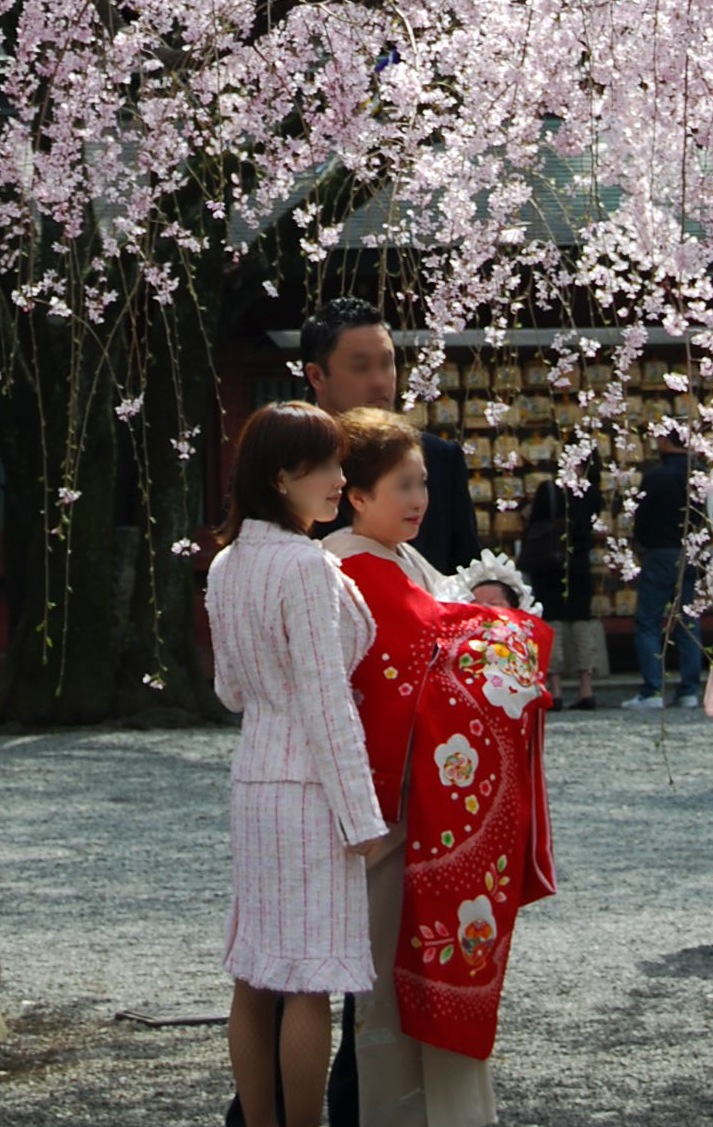Miyamairi on:
[Wikipedia]
[Google]
[Amazon]
 Miyamairi (Õ««ÕÅéŃéŖ, literally "shrine visit") is a traditional
Miyamairi (Õ««ÕÅéŃéŖ, literally "shrine visit") is a traditional
 Miyamairi (Õ««ÕÅéŃéŖ, literally "shrine visit") is a traditional
Miyamairi (Õ««ÕÅéŃéŖ, literally "shrine visit") is a traditional Shinto
Shinto () is a religion from Japan. Classified as an East Asian religion by scholars of religion, its practitioners often regard it as Japan's indigenous religion and as a nature religion. Scholars sometimes call its practitioners ''Shint ...
rite of passage
A rite of passage is a ceremony or ritual of the passage which occurs when an individual leaves one group to enter another. It involves a significant change of social status, status in society. In cultural anthropology the term is the Anglicisat ...
in Japan
Japan ( ja, µŚźµ£¼, or , and formally , ''Nihonkoku'') is an island country in East Asia. It is situated in the northwest Pacific Ocean, and is bordered on the west by the Sea of Japan, while extending from the Sea of Okhotsk in the n ...
for newborns. Approximately one month after birth (31 days for boys and 33 days for girlsAlice Mabel Bacon
Alice Mabel Bacon (February 26, 1858 – May 1, 1918) was an American writer, women's educator and a foreign advisor to the Japanese government in Meiji period Japan.
Early life
Alice Mabel Bacon was the youngest of the three daughters and ...
, "Japanese Girls and women" revised and enlarged edition, Boston and New York, Houghton Mifflin Company, The Riverside Press Cambridge, 1902), parents and grandparents bring the child to a Shinto shrine, to express gratitude to the deities for the birth of a baby and have a shrine priest pray for their health and happiness. The practice is similar to a Christian
Christians () are people who follow or adhere to Christianity, a monotheistic Abrahamic religion based on the life and teachings of Jesus Christ. The words ''Christ'' and ''Christian'' derive from the Koine Greek title ''Christ├│s'' (╬¦Žü╬╣Ž ...
infant baptism
Infant baptism is the practice of baptising infants or young children. Infant baptism is also called christening by some faith traditions.
Most Christians belong to denominations that practice infant baptism. Branches of Christianity that ...
.
Today, most Miyamairi are practiced between one month and 100 days after birth. In famous and busy shrines, the ceremony is held every hour, often during weekends. A group of a dozen babies and their families are usually brought into the hall, one group after another. A Shinto priest wearing a costume and headgear appears between the group and the altar, reciting a prayer and swinging a tamagushi
is a form of Shinto offering made from a '' sakaki''-tree branch decorated with shide strips of washi paper, silk, or cotton. At Japanese weddings, funerals, miyamairi and other ceremonies at Shinto shrines, ''tamagushi'' are ritually presen ...
right and left. During the prayer, the priest cites the name of the baby, the names of the parents, the family's address, and the baby's birthday. Afterwards, the parents and grandparents come forward one by one, bow to the altar, and place tamagushis upon it.
At the end of the ceremony, sake in a red wooden cup is given to each person in attendance; small gifts are often given to the family.
A shrine typically charges between ┬ź5,000 and ┬ź10,000 per baby for this ceremony.
References
External links
Shinto in Japan Ceremonies in Japan Rites of passage {{Shinto-stub